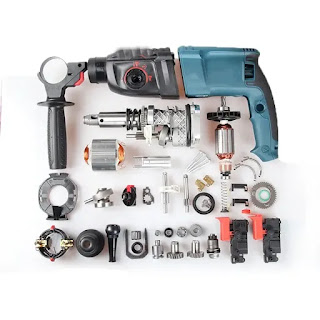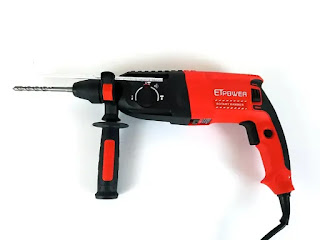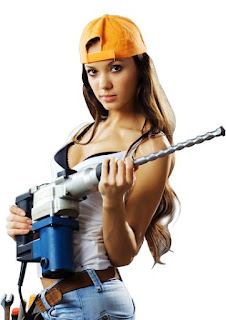An Overview of our ETPOWER Rotary hammer
What is a "rotary hammer" and what applications does it have?
A power tool rotary hammer, sometimes known as a rotary hammer drill, can be used to drill and chisel hard objects like brick, stone, and cement walls, among others.
In that it also pounds the drill bit in and out while the rotary hammer is spinning, it functions similarly to a hammer drill or impact drill. Furthermore, rotary hammer drills employ a piston system as opposed to the unique clutch used by impact drills. It is able to drill larger holes more quickly because to the piston system, which makes the hammer drill's hammer blow significantly stronger.
In essence, the majority of rotary hammer drills have three model settings: drill mode, hammer drill, or plain hammer, allowing them to function as a miniature jack hammer.
WHAT MAKES AN ELECTRIC ROTARY HAMMER DRILL?
Two pistons are used in rotary hammers: a drive piston and a flying piston. The drive piston in a cylinder is moved back and forth by an electric motor turning a crank. The opposite end of the same cylinder houses the flying piston. You can tell it is made up of a grip handle and an auxiliary handle, a model selection knob, Chuck, Switch&Locker, Reversible switch, etc. from the outside. You can easily see in the following image how a rotary hammer drill is made.
What distinguishes SDS, SDS MAX, and SDS-PLUS HAMMER DRILLS from one another?
The SDS Max has an 18mm shank, while the SDS and SDS Plus have a 10mm shank. Because they can handle increased torque and force, SDS Max bits have the advantage of enhancing capabilities for more difficult masonry work. The SDS Plus series is shorter and suited for lighter duty tasks and holes with smaller diameters.






评论
发表评论